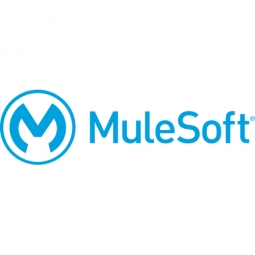Customer Company Size
Large Corporate
Region
- America
Country
- United States
Product
- MuleSoft’s Anypoint Platform™
Tech Stack
- Oracle’s ESB
- Salesforce Lightning
Implementation Scale
- Enterprise-wide Deployment
Impact Metrics
- Productivity Improvements
- Digital Expertise
Technology Category
- Platform as a Service (PaaS) - Connectivity Platforms
Applicable Industries
- Cities & Municipalities
Applicable Functions
- Business Operation
Use Cases
- Smart City Operations
- Public Warning & Emergency Response
Services
- Cloud Planning, Design & Implementation Services
- System Integration
About The Customer
The City and County of Denver (CCD) is a government entity that serves the residents and businesses of Denver, Colorado. It is responsible for providing a wide range of services, from renewing driver's licenses and applying for permits to booking COVID-19 tests. The CCD is connected to over 50 government agencies and is committed to bringing a digital-first approach to its services. In the digital age, CCD wanted to provide the same convenience and efficiency that people experience when ordering food, booking travel, or paying bills online. To achieve this, CCD aimed to connect its legacy IT systems and critical data to new cloud-based services, implement new technologies to enhance the delivery of law enforcement services, and streamline key government services such as licensing and permitting.
The Challenge
The City and County of Denver (CCD) aimed to bring a digital experience to Colorado residents and businesses, allowing them to conduct government-related services online. This involved connecting legacy IT systems and critical data to new cloud-based services across over 50 agencies, implementing new technologies to enhance the delivery of law enforcement services, and streamlining key government services such as licensing and permitting. Before MuleSoft, the CCD team used Oracle’s ESB solution, which slowed down innovation and required frequent, time-consuming updates, custom integrations with multiple single points of failure, and very little documentation or reusability.
The Solution
The CCD team turned to MuleSoft’s Anypoint Platform to build API integrations and connect hundreds of legacy systems, facilitating real-time data integration for various requests and services. The migration to MuleSoft took just under a year, compared to the 2+ years it took to migrate to Oracle ESB. This integration paved the way to digitizing government services, providing law enforcement with a single dashboard with real-time metrics. Beyond law enforcement services, CCD used MuleSoft to streamline key government services such as licensing, permitting, and application requests. They built a single, self-service portal using Salesforce Lightning, enabling citizens to easily request government services and government employees to review all information in a single interface in near real-time. When the COVID-19 pandemic hit, the CCD team quickly created a custom web portal that provides citizens with information on COVID-19, where to get tested, and enabled them to book testing appointments.
Operational Impact
Quantitative Benefit

Case Study missing?
Start adding your own!
Register with your work email and create a new case study profile for your business.
Related Case Studies.

Case Study
Turning A Stadium Into A Smart Building
Honeywell created what it called the “intelligent system” for the National Stadium in Beijing, China, turning the venue for the opening and closing events at the 2008 Summer Olympics into a “smart building.” Designed by highly controversial artist Ai Weiwei, the “Bird’s Nest” remains one of the most impressive feats of stadium architecture in the world. The 250,000 square meter structure housed more than 100,000 athletes and spectators at a time. To accommodate such capacity, China turned to Honeywell’s EBI Integrated Building Management System to create an integrated “intelligent system” for improved building security, safety and energy efficiency.
.png)
Case Study
Smart Street Light Network (Copenhagen)
Key stakeholders are taking a comprehensive approach to rethinking smart city innovation. City leaders have collaborated through partnerships involving government, research institutions and solution providers. The Copenhagen Solutions Lab is one of the leading organizations at the forefront of this movement. By bringing together manufacturers with municipal buyers, the Copenhagen Solutions Lab has catalyzed the development and deployment of next-generation smart city innovations. Copenhagen is leveraging this unique approach to accelerate the implementation of smart city solutions. One of the primary focus areas is LED street lighting.

Case Study
Buoy Status Monitoring with LoRa
The Netherlands are well-known for their inland waterways, canals, sluices and of course port activities. The Dutch Ministry of Infrastructure indicates that there are thousands of buoys and fixed items in and near water environments that would profit from IoT monitoring. One of the problems with buoys for example, is that they get hit by ships and the anchor cable breaks. Without connectivity, it takes quite some time to find out that something has happened with that buoy. Not to mention the costs of renting a boat to go to the buoy to fix it. Another important issue, is that there is no real-time monitoring of the buoys at this moment. Only by physically visiting the object on the water, one gains insight in its status.

Case Study
Barcelona Case Study
Barcelona’s heavy traffic and its associated high levels of pollution were the primary factors that motivated some companies and universities to work on strategies for improving traffic in the city centre. Bitcarrier is one of the technologies involved in the In4Mo Project, whose main objective is to develop the applications that form the core of smart mobility, one of the fundamental pillars of the smart city concept.

Case Study
China Mobile Smart Parking
Smart Parking, powered by NB-IoT technology, is making it easier for drivers to find free parking spots. Cities can better manage their parking assets and maximize the revenue available to them as a result. Drivers searching for parking create congestion and pollution by circling and hunting for available parking. Smart Parking services are able to significantly ease these problems by guiding a driver directly to a parking space.








